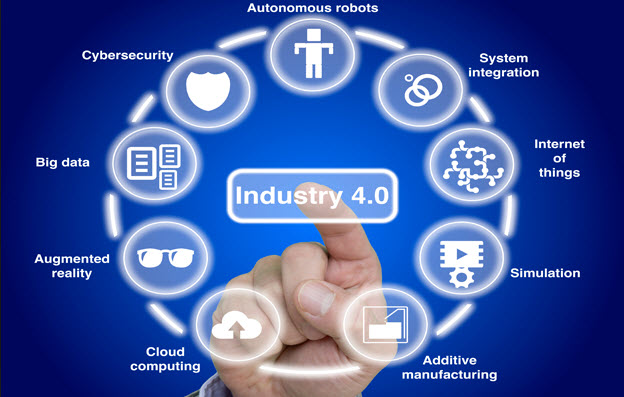
Views: 2
From the Invention of the Steam Engine to the Rise of Cloud Computing, the World of Industry Has Always Been in Flux
We now stand at the threshold of the Fourth Industrial Revolution, known as Industry 4.0—an era in which the boundaries between the physical and digital worlds are increasingly blurred, and industries undergo fundamental transformation through the adoption of intelligent technologies. This article provides a comprehensive examination of this phenomenon, its key technologies, its impact on businesses, and the opportunities and challenges it presents.
The Evolution: From the First to the Fourth Industrial Revolution
To better understand Industry 4.0, it is essential to briefly revisit the three preceding industrial revolutions:
- First Industrial Revolution: Beginning in the late 18th century, marked by the invention of the steam engine and the mechanization of production.
- Second Industrial Revolution: Emerging in the late 19th and early 20th centuries, where electricity, steel, and assembly lines enabled mass production.
- Third Industrial Revolution: Starting in the 1950s, the advent of computers and electronics elevated production automation to a new level, ushering in the digital revolution.
Industry 4.0: The Intelligent Integration of Physical and Digital Worlds
The Fourth Industrial Revolution builds upon the digital revolution by integrating advanced technologies to revolutionize automation, monitoring, and supply chain analysis. At its core lie the Industrial Internet of Things (IIoT) and cyber-physical systems, which leverage intelligent algorithms to manage machinery, robots, and industrial equipment.
Industry 4.0 transforms every component of the supply chain—from production and factories to warehousing and logistics—into “smart” systems. By connecting to support systems such as ERP, it facilitates collaboration and information accessibility across all departments and partners.
Key Technologies Driving Industry 4.0
The concept of Industry 4.0 reaches its full potential only when a set of advanced technologies are combined. Some of the most significant include:
- Industrial Internet of Things (IIoT): Connecting machines and devices via sensors and data exchange.
- Cloud Computing: Enabling the storage, processing, and rapid analysis of massive volumes of industrial data.
- Artificial Intelligence & Machine Learning: Learning from data, predicting patterns, and supporting intelligent decision-making.
- 3D Printing: Manufacturing complex components and enabling product customization.
- Augmented Reality (AR) & Virtual Reality (VR): Enhancing employee training, equipment maintenance, and process optimization.
Impacts and Benefits of the Fourth Industrial Revolution for Businesses
Industry 4.0 is not merely a technological shift but a strategic framework for growth and competitiveness. Its advantages include:
- Increased productivity and reduced costs through process automation and supply chain optimization.
- Predictive maintenance to prevent unexpected breakdowns.
- Data-driven decision-making powered by real-time analytics.
- Smart and customizable products to enhance customer experience.
- Empowering the workforce with AI tools and real-time insights.
Challenges Ahead
Despite its many advantages, implementing Industry 4.0 is not without challenges. Cybersecurity stands as one of the most critical obstacles. Connecting devices to networks exposes them to hacking attempts and security breaches. Therefore, safeguarding data and building secure infrastructures are essential prerequisites.
Conclusion
The Fourth Industrial Revolution is not simply a technological upgrade but a fundamental transformation in how production, management, and competition unfold in the global marketplace. Companies that integrate intelligent technologies into their strategies will not only boost productivity and reduce costs but also secure their position in the future market and emerge as industry leaders.
